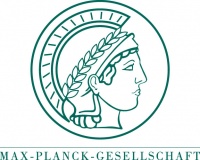 Max Plank Society
Max Plank SocietyThe research institutes of the Max Planck Society perform basic research in the interest of the general public in the natural sciences, life sciences, social sciences, and the humanities. There are 80 institutes and research facilities employing approximately 13,300 employees. Included in this are 4,800 scientists and 7,000 student assistants, fellows of the International Max Planck Research Schools, doctoral students, postdoctoral students, research fellows and visiting scientists. The primary goal of the High-Field MR Center at the MPG for Biological Cybernetics is the development of new magnetic resonance techniques that are able to specifically probe the structural and biochemical composition of living tissue at field strength ranging from 3T to 9.4T and 14.1T. The department has a long-term experience in the development of MR methodology with a focus on rapid imaging of specific tissue parameters (temperature, diffusion, oscillations, contrasts, magnetization transfer), as well as in hardware development such as RF coils and devices. The research group consists in total of 30 scientists in the field of MR physics, engineering and chemistry. This group will contribute to the overall methodological developments and take responsibility for the development, testing and application of novel MR technology for CEST imaging.
Prof. Klaus Scheffler is Professor for Biomedical Magnetic Resonance at the University of Tübingen and a fellow at the Max Planck Society.His research goal is to develop new magnetic resonance techniques that are able to specifically probe the structural, biochemical composition and function of living tissue. This is closely linked to his interest to understand the details of magnetic resonance signal formation within a living environment, as nuclear magnetization is continuously influenced by different processes during its live time between excitation and relaxation. He is involved in the development of novel acquisition techniques and radiofrequency technology for very high field MRI up to 9.4T for humans and 14.1T for animals.
Within GLINT, Klaus Scheffler will contribute to the overall methodological developments and take responsibility for the development, testing and application of novel MR technology for CEST imaging as well as quantitative T1, T2 and T1ρ techniques. Furthermore, he will be involved in the recruitment and measurement brain tumour patients with GlucoCEST imaging at 3T.